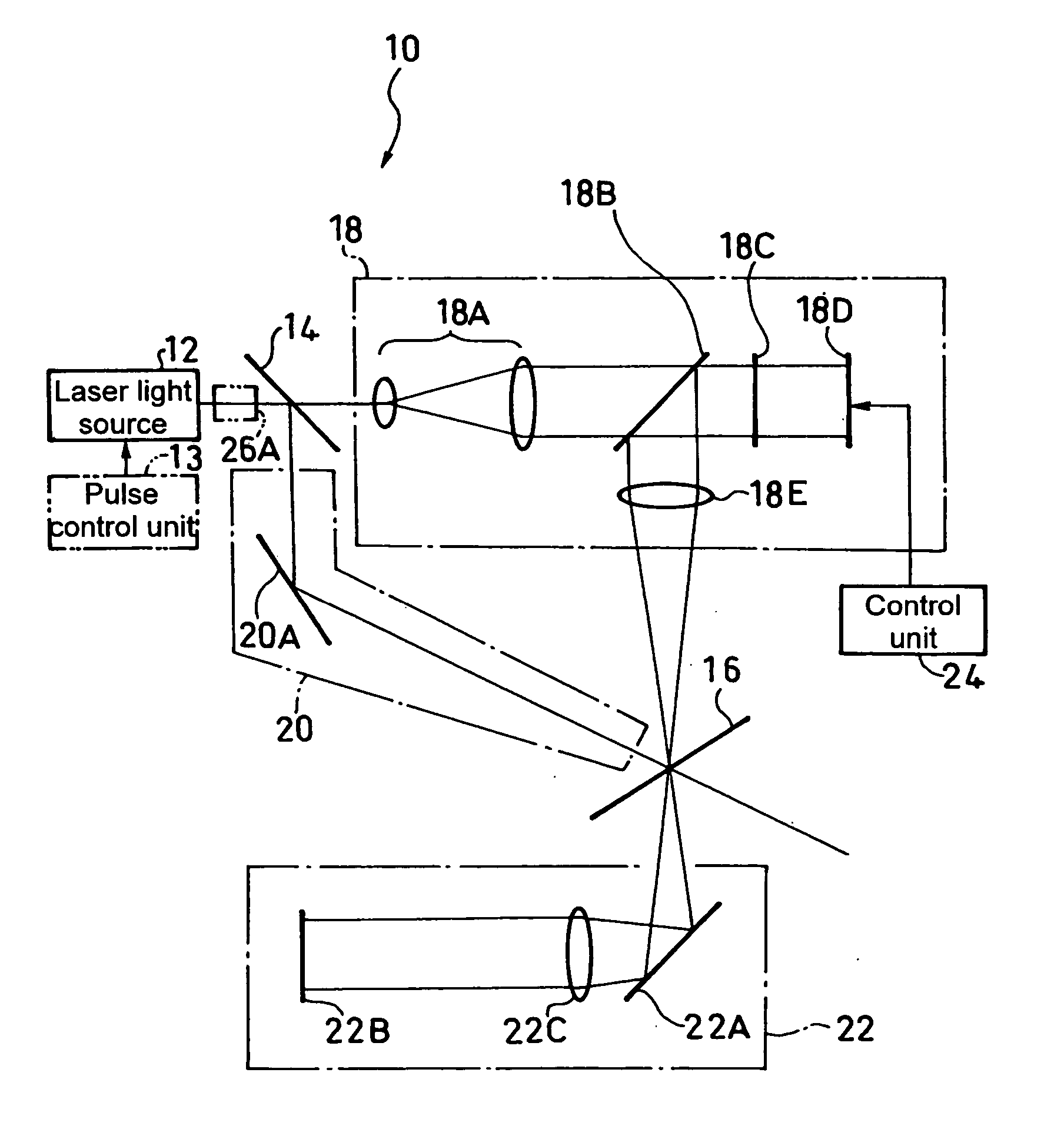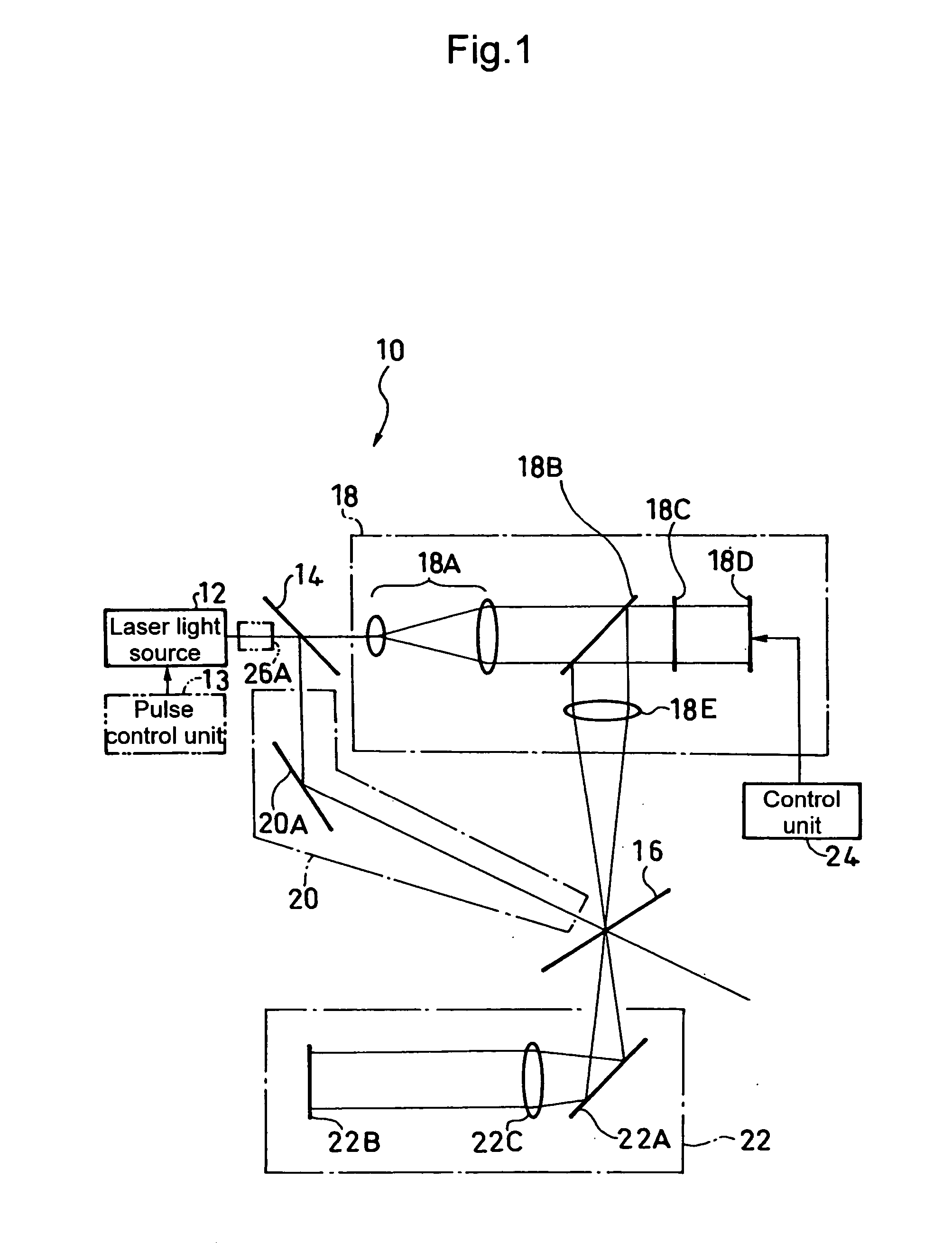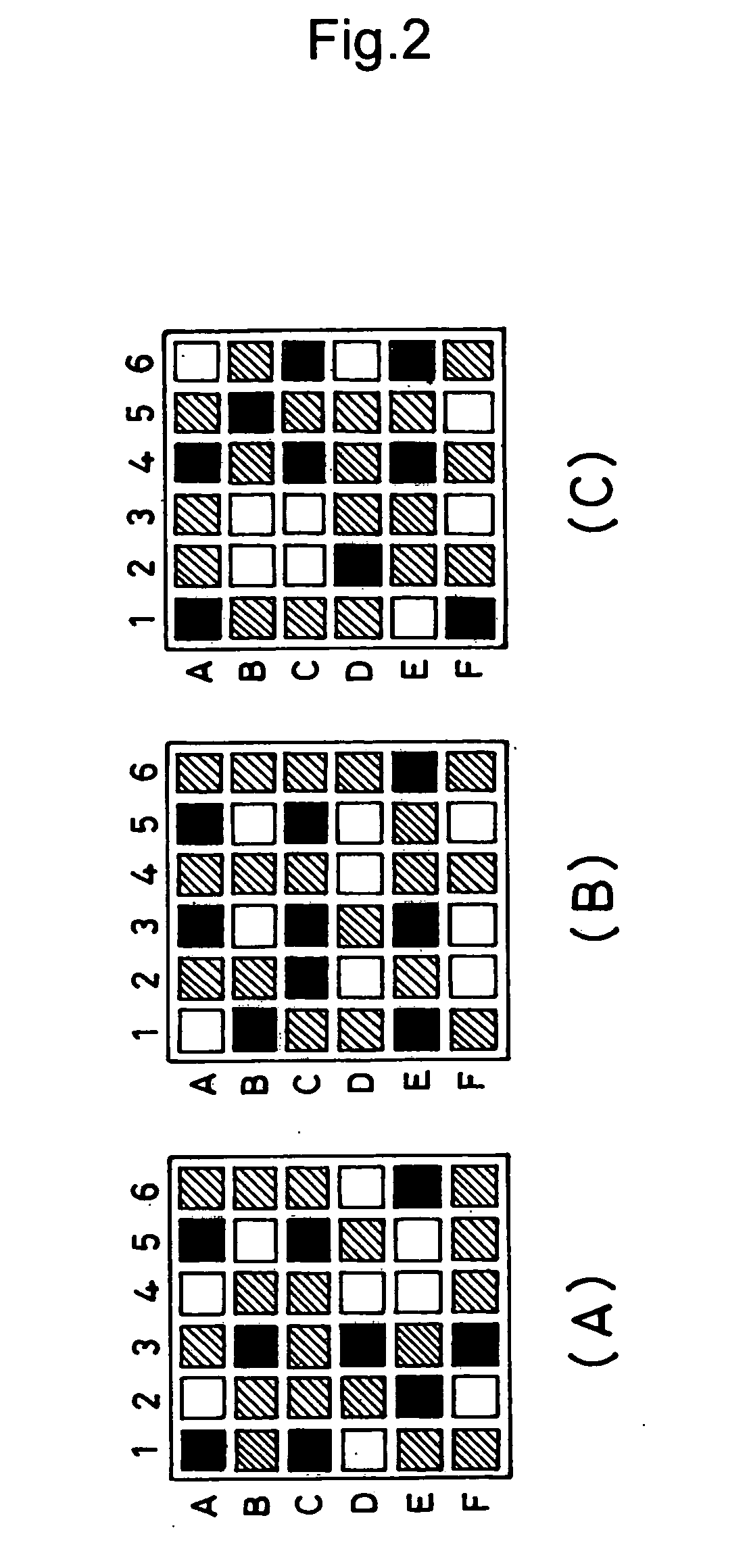Holographic recording method and holographic recording apparatus
a recording method and recording apparatus technology, applied in the field of holographic recording methods and holographic recording apparatuses, can solve the problems of reducing the fidelity of gradation display, limiting the device of polarization control type, and reducing the precision of gradation display
- Summary
- Abstract
- Description
- Claims
- Application Information
AI Technical Summary
Benefits of technology
Problems solved by technology
Method used
Image
Examples
first embodiment
[0039] Hereinafter, a holographic recording apparatus 10 according to a first embodiment of the present invention will be described with reference to FIG. 1.
[0040] This holographic recording apparatus 10 is configured to include: a laser light source 12; a first polarizing beam splitter 14 for splitting a laser beam from this laser light source 12 into an object beam and a reference beam; an object optical system 18 for introducing the object beam, or the polarized light transmitted through the first polarizing beam splitter 14 such as p-polarized light, to a holographic recording medium 16; a reference optical system 20 for introducing the reference beam, or the polarized light reflected from the first polarizing beam splitter 14 such as s-polarized light, to the holographic recording medium 16; an imaging optical system 22 for reproducing a data page from diffracted light occurring from the holographic recording medium 16; and a control unit 24.
[0041] The object optical system 1...
second embodiment
[0064] Next, a second embodiment of the present invention will be described with reference to FIGS. 6 to 8.
[0065] This embodiment relates to a method of uniformizing an intensity distribution when the laser beam emitted from the laser light source has a Gaussian intensity distribution within its beam diameter, by using apodization through the division of the exposure time of a reflection type spatial light modulator without using expensive optical parts.
[0066] For example, assuming that the object beam on the optical path immediately before incident on the DMD 18D has such an intensity distribution within its beam diameter as shown in FIG. 9, the amount of light (light intensity) decreases like (P0 to P1)→(P1 to P2)→(P2 to P3)→(P3 to P4) in order of areas α, β, γ, and δ from the beam center to the radial outside of the beam diameter.
[0067] Corresponding to the areas α to δ having such respective light intensities, this second embodiment uniformizes the distribution of exposure in...
PUM
| Property | Measurement | Unit |
|---|---|---|
| area | aaaaa | aaaaa |
| reflection | aaaaa | aaaaa |
| exposure time t1 | aaaaa | aaaaa |
Abstract
Description
Claims
Application Information
 Login to View More
Login to View More - R&D
- Intellectual Property
- Life Sciences
- Materials
- Tech Scout
- Unparalleled Data Quality
- Higher Quality Content
- 60% Fewer Hallucinations
Browse by: Latest US Patents, China's latest patents, Technical Efficacy Thesaurus, Application Domain, Technology Topic, Popular Technical Reports.
© 2025 PatSnap. All rights reserved.Legal|Privacy policy|Modern Slavery Act Transparency Statement|Sitemap|About US| Contact US: help@patsnap.com



